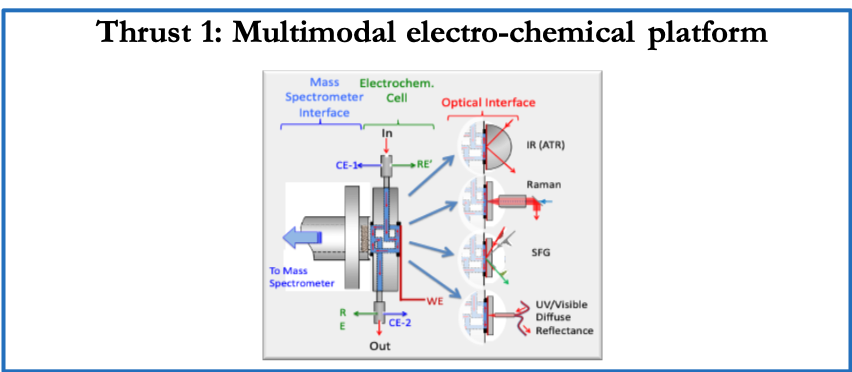
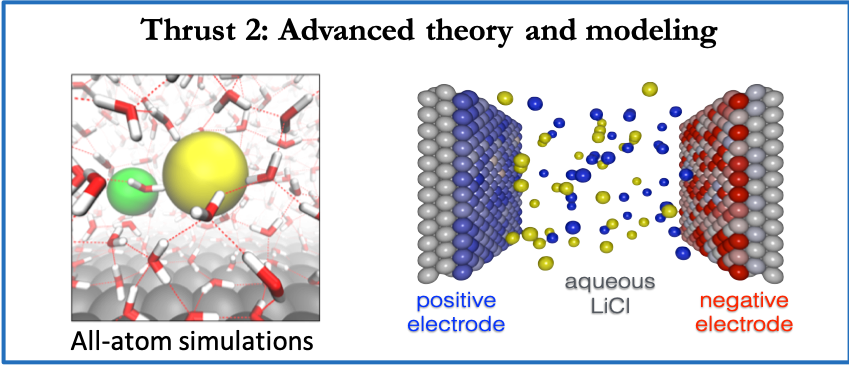
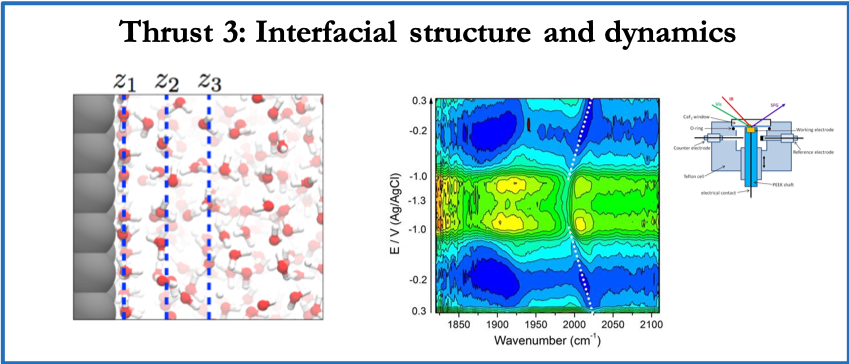
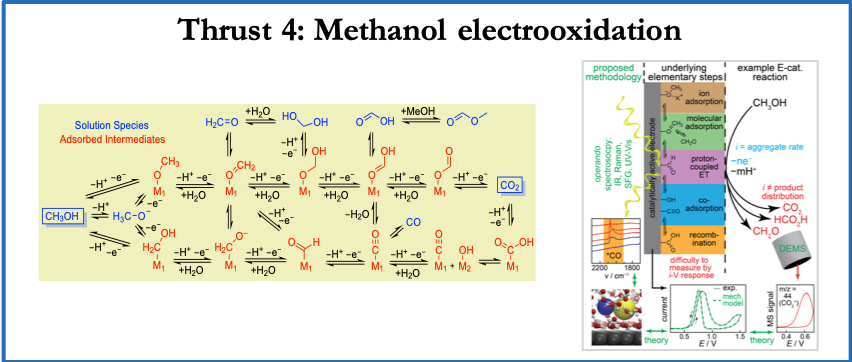
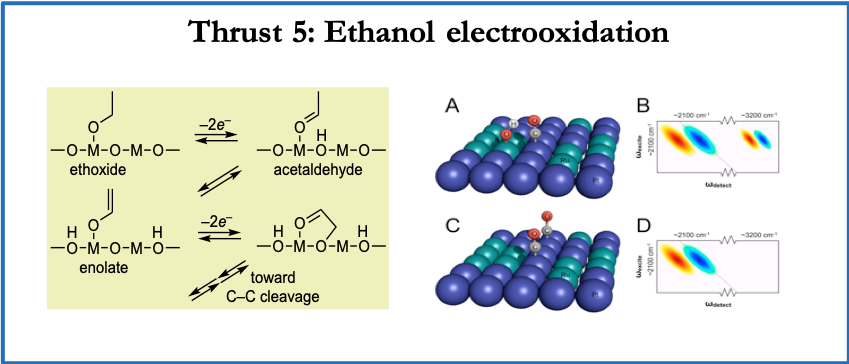
The research is divided into the five closely integrated Thrust areas described below:
- Thrust 1. To design, build, and commission a multimodal electrochemical/spectroscopic platform for operando molecular-level investigations of electrochemical processes. This platform will integrate the high sensitivity of electrochemical methods, the quantification of mass spectrometry, and the chemical sensitivity and temporal resolution of spectroscopic methods.
- Thrust 2. To develop a wide range of computational tools, including (i) atomistic simulation methods that can quantify adsorbate populations on heterogeneous surface sites and elucidate double layer effects; (ii) microkinetic models to simulate i-V curves while accounting for interfacial heterogeneities and dynamical effects; and (iii) first principles methods to simulate charge transfer reactions at electrochemical interfaces. A key component of this thrust is to create an open-source software package for simulating electrochemical phenomena with sophisticated microkinetic models that can be parametrized with first principles methods and go beyond more conventional, and less powerful, existing codes.
- Thrust 3. To address unresolved, fundamental questions of broad relevance regarding the molecular structure and dynamics of electrochemical interfaces. Using spectroscopic techniques (as developed in Thrust 1), we will measure fundamental properties, including electric fields, dielectric saturation, solvation, and protonation near the interface. With support from theory (as developed in Thrust 2), we will develop a transformative, molecular-scale understanding of interfacial environments and inner-sphere reactivities, especially under operating (non-equilibrium) conditions.
- Thrust 4. To apply the fundamental insights gained in Thrusts 1-3 to a case study of a prototypical catalytic reaction: the electrochemical oxidation of methanol. Using this important fuel cell reaction as a foundational and tractable model system, we will demonstrate the power of our multimodal operando electrochemical platform and i-V simulation methodology to establish the mechanistic factors that drive selective and efficient complete oxidation of methanol to carbon dioxide, a longstanding goal in both fundamental and practical electrocatalysis.
- Thrust 5. To show that the advances from Thrusts 1-4 will allow important progress to be made on a recalcitrant electrocatalysis problem: the complete electrooxidation of ethanol, including the very demanding C–C bond cleavage step. Our new approaches to this important challenge will utilize the tools, fundamental insights of inner-sphere electrocatalysis, and specific understanding of methanol oxidation to be developed by this MURI team.

